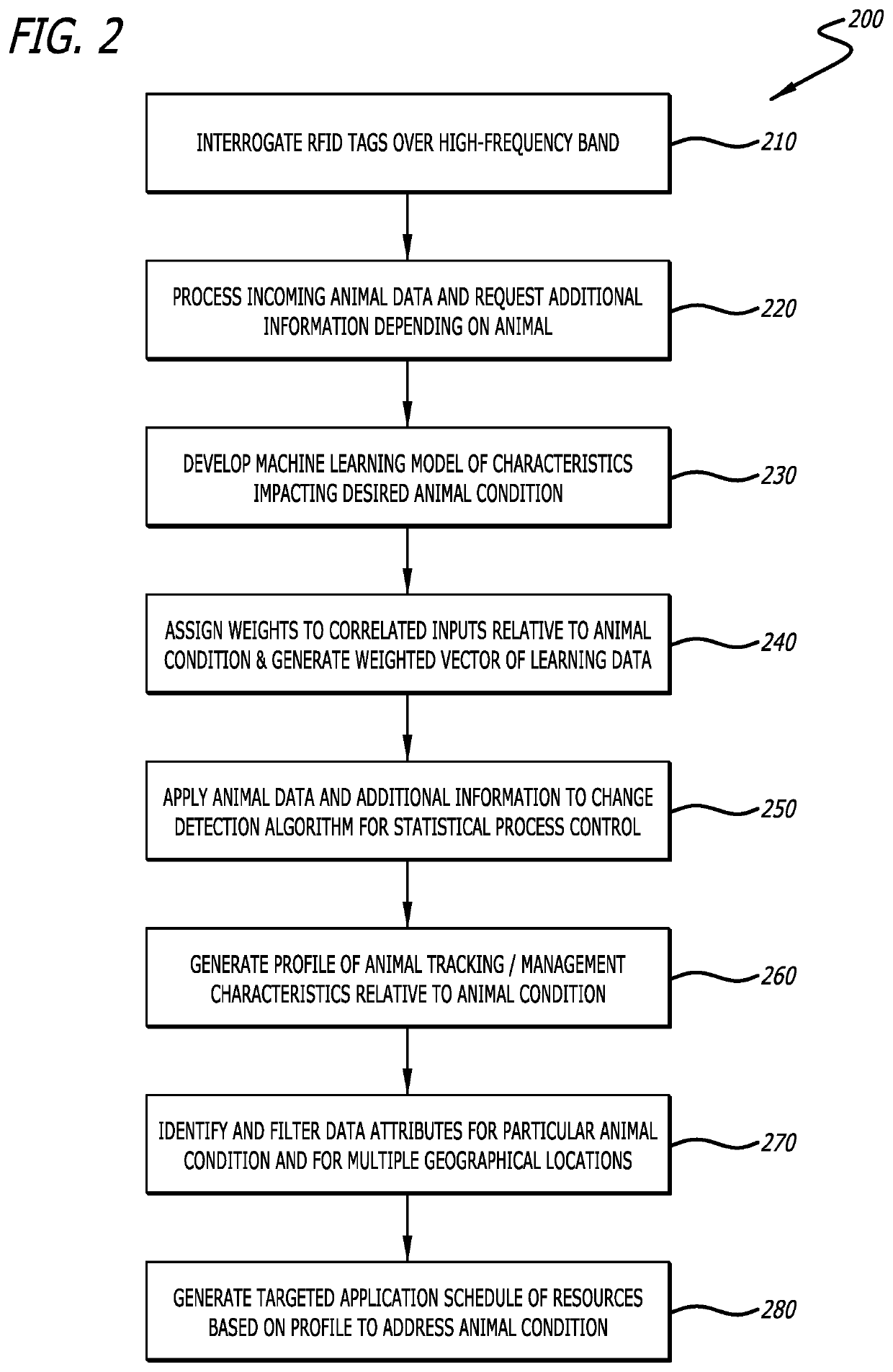Livestock and feedlot data collection and processing using UHF-band interrogation of radio frequency identification tags
a radio frequency identification and feedlot technology, applied in the field of feedlot data collection and processing, can solve the problems of limited limiting the utility of low-frequency scanners in collecting and processing livestock-related information, and not allowing simultaneous interrogation of multiple tags
- Summary
- Abstract
- Description
- Claims
- Application Information
AI Technical Summary
Benefits of technology
Problems solved by technology
Method used
Image
Examples
Embodiment Construction
[0016]In the following description of the present invention, reference is made to the exemplary embodiments illustrating the principles of the present invention and how it is practiced. Other embodiments will be utilized to practice the present invention and structural and functional changes will be made thereto without departing from the scope of the present invention.
[0017]The present invention is, as noted above, an agricultural data collection and processing framework 100, provided in one or more systems and methods for utility in precision agriculture, and specifically for livestock tracking and management. The agricultural data collection and processing framework 100 utilizes ultra-high frequency (UHF) band interrogation of RFID tags associated with livestock, and analyzes livestock tracking and management characteristics in evaluating an animal condition, and uses those characteristics to determine and predict data attributes for an allocation and prioritization of livestock-...
PUM
 Login to View More
Login to View More Abstract
Description
Claims
Application Information
 Login to View More
Login to View More - R&D
- Intellectual Property
- Life Sciences
- Materials
- Tech Scout
- Unparalleled Data Quality
- Higher Quality Content
- 60% Fewer Hallucinations
Browse by: Latest US Patents, China's latest patents, Technical Efficacy Thesaurus, Application Domain, Technology Topic, Popular Technical Reports.
© 2025 PatSnap. All rights reserved.Legal|Privacy policy|Modern Slavery Act Transparency Statement|Sitemap|About US| Contact US: help@patsnap.com


